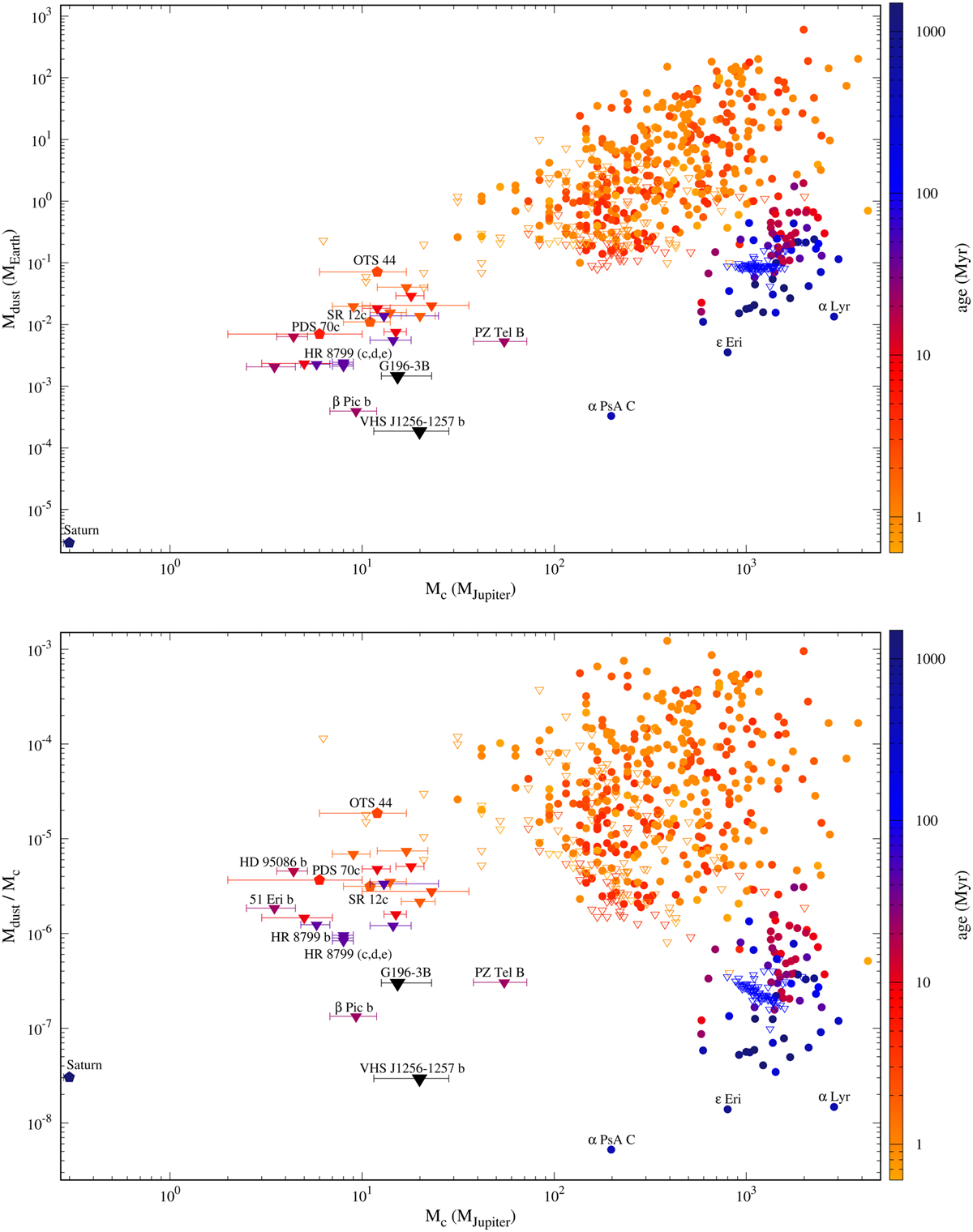Fig. 4

Download original image
Measured (top panel) and relative (bottom panel) disk dust masses (pentagons and circles, ALMA detections) and dust mass upper limits (triangles, mostly ALMA nondetections) as a function of the mass of the disk-host object. Data are taken from Table 2 and Testi et al. (2022), Sepulveda et al. (2019), Marino et al. (2020), Sullivan et al. (2022), and Matrà (in prep.). Upper limits of substellar companions and free-floating objects are shown with filled and open triangles, respectively. Computations of the dust masses and upper limits are based on the assumption of a constant temperature of the disk dust (see text). In the bottom panel, the three companions of HD 8799 (c,d,e) have the same estimated dust mass upper limits; we artificially shifted them vertically so it is visually noticeable that there are three data points. The ages of the disk-host sources are color-coded (see the bar to the right of the panels). Protoplanetary disks (i.e., very young ages) have yellowish to orangish colors, while debris disks (i.e., typically older than 20 Myr) have dark red, blue, and dark blue colors, with the exception of our two targets (G196-3 B and VHS J1256–1257 b) plotted as black triangles.
Current usage metrics show cumulative count of Article Views (full-text article views including HTML views, PDF and ePub downloads, according to the available data) and Abstracts Views on Vision4Press platform.
Data correspond to usage on the plateform after 2015. The current usage metrics is available 48-96 hours after online publication and is updated daily on week days.
Initial download of the metrics may take a while.


